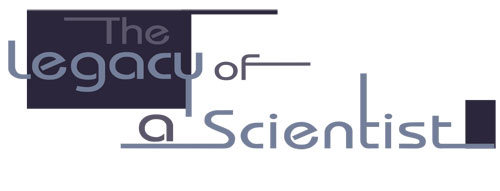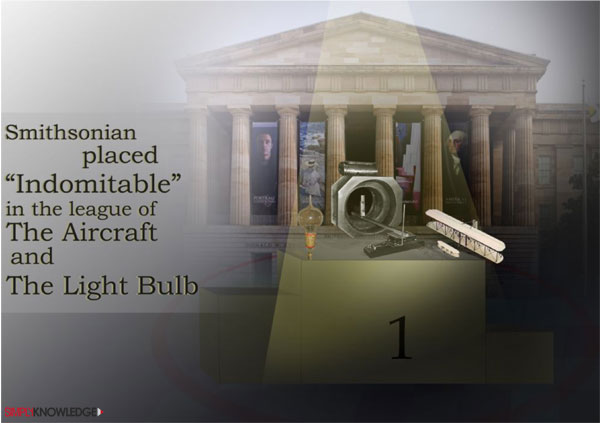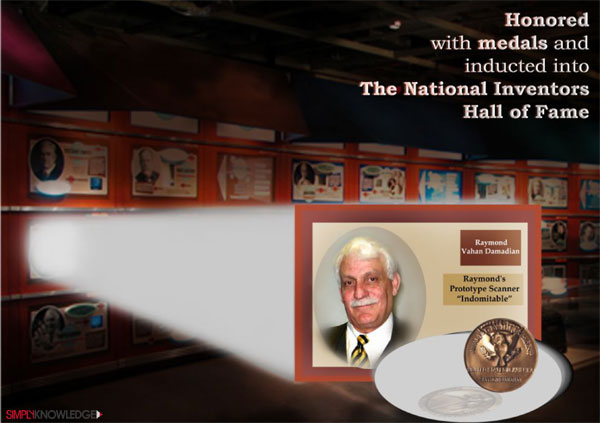
Introduction
- Martin Luther King, Jr.
Medicinal history has undergone a sea of change in the last two centuries, from the dark times of early barbaric practices of amputation in the field of healthcare, to the dawn of modern medicine; from the propagation of the germ theory by a number of scientists, to the idea that clean hands around the ailing patients would mean less of misery and mortality. The military in these times was most susceptible and the military doctors formulated new methods of trauma treatment and surgery. Pasteurization invented by Louis Pasteur and his theory that micro-organisms are related to diseases proved to be the juncture at which modern medicine turned to be more life saving than ever- before.
However, dreadful diseases continued to invade the human body internally, affecting vital organs and leading to ailments unknown to man. A porthole to the human body was the need of the hour for the doctors and surgeons. The X-rays provided interim relief, however the detriment that came alongwith it was cancerous and fatal, and lab technology longed for a shot in the arm.
The resolution for this was provided not more than thirty years ago in 1977 by a man named Raymond Vahan Damadian, an American medical practitioner, spiritualist and scientist who invented the first human body (Magnetic Resonance) Scanning Machine. This machine was that harmless porthole, the innocuous window to the human body which has made it uncomplicated for the surgeons to know what is wrong inside the human body.
Creating such a device is no less than a herculean task and surely Mr. Damadian would’ve faced obstacles in his course. He once said, “theoretical physicists claimed to have done calculations demonstrating that my idea was beyond what the theory of physics would allow.” But evidently, Mr. Damadian stuck to his guns.
Let us experience how Raymond Vahan Damadian ventured through his life overcoming hurdles to achieve the stupendous task of designing the MRI machine.

Budding Scientist
Raymond was born to an Armenian family on the 16th of March, 1936. It was in a small cottage, facing the airy waterfront park in the commercial and residential town of Long Island in Queens County on a rather breezy day that little Raymond’s cries mixed with the sound of the flowing east river making up sweet music to his parents’ ears. Vahan Krikor Damadian, Raymond’s father was a very happy man alongwith his mother and grandmother. He had seen happy days after a very long time, what with the ongoing war and his past days escaping from Turkey and the horror of the Armenian genocide. He did odd jobs and worked as frequently as possible to provide Raymond a good life. Raymond was the cynosure of all eyes as he roamed carelessly around town and solved puzzles. Vahan once noticed that Raymond had a keen sense in Mathematics and so, even during the wartime he decided to let him go to school. Raymond was an ardent student, schooldays were full of mischief for him, but that never hampered his sharp mathematical sense.
Though young, Raymond demonstrated an affinity for Math and Science. Being from the artistic town of Long Island he also got into the prestigious Juilliard music institution where he learnt the symphonic violin for eight whole years. Violin gave a different quality of patience to him. But music wasn’t his sole aim. Years later, Raymond surpassed his schooling in New York, earned a scholarship at the age of 16 and moved to Wisconsin to study Mathematics. He was brilliant in college and since, started developing a knack to research. In a span of 4 years Raymond earned his Bachelors degree in Mathematics with excellence from the University of Wisconsin-Madison in 1956. He now decided to return to his home city New York.
War was long gone and Science was gazed upon to act as a saviour to take away America from the Great Depression. He enrolled into the Albert Einstein College of Medicine, where he learnt about Medicine in detail and earned an M.D degree in 1960. Being the son of a genocide survivor, Raymond always wanted to make him-self commodious for the betterment of the regular folk. He underwent internship at the Washington University and then residency and fellowship at Harvard. As an after-effect of war, Raymond also joined the Air Force for a brief period as service to the nation. The skies were no match however to Raymond’s soaring ideas and thoughts.

Magnetic Mind
Through his metamorphosis of being a student to being a scientist, Raymond also took up teaching in SUNY Downstate Medical Centre as a professor soon after he departed from the Air Force. He was soon teaching young students what he had learnt in the Albert Einstein Medical College, but his thirst for research was indefatigable.
One fine day, his associate Freeman Cope, a Navy physician and physicist, brought him to a small company on the outskirts of Pittsburgh where the two measured potassium, a common electrolyte, in a strain of Dead Sea bacteria as casual research. This continued for a few days and Raymond had a storm of questions brewing in his mind. He wanted to know a lot of things from that point on, from what he observed out of the research at the company.
While having breakfast a few mornings later, Raymond said aloud "What would happen, where you have an antenna wrapped around the human body, where you can look at an atom, and then another atom, and then another atom you could go from one tissue to the next and, without ever invading the body, get the chemistry of each organ." Cope giggled in disbelief. He, alongwith many other scientists and physicists thought Raymond's idea far-fetched, but Raymond committed himself to the quest.
In 1970, Raymond’s beloved grandmother expired. The cause for her death was cancer, an ailment which was victimising a number of people all over the globe. She had always supported Raymond in his endeavours and Raymond shared a special bond with her. Inspired by her, he returned to test cancerous liver samples from rats with the Nuclear Magnetic Resonance (NMR) equipment. Nuclear Magnetic Resonance wasn’t a new concept then as it was being already used in Bio-Chemistry and Geology to study rocks and minerals. It is a physical phenomenon which nuclei in a magnetic feild absorbs and re-emits electromagnetic radiation. This energy is at a specific resonance frequency which depends on the strength of the magnetic field and the magnetic properties of the isotope of the atoms.
On the basis of his electrolyte work, Raymond then surmised that the Hydrogen signal in cancerous tissue might differ from that of healthy tissue because tumours contain more water. More water meant more Hydrogen atoms - two per water molecule. Once the bath of radio waves was switched off, telltale emissions from the cancerous regions would linger longer than those from the healthy, less watery regions. And to his benefit and his critics’ dismay, it worked.
The journal ‘Science’ published Raymond’s findings in March 1971. He suggested with vigour that these differences between the two could possibly help to diagnose and detect cancer. However, Raymond’s initial effort was full of flaws and couldn’t be put to use practically, as he relied more upon the point-to-point scan of the whole length of the body, using the relaxation rates. This proved ineffective to indicate out the cancerous tissue. Sceptics sarcastically informed him that to use the then-young technique of nuclear magnetic resonance in a medical imaging machine would mean rotating the patient at 10,000 revolutions per minute!
In contradiction to being put down, Raymond went ahead and patented the concept of NMR for use in medicine in 1974. The National Science Foundation noted, “The patent included the idea of using the NMR to ‘scan’ the body and locate cancerous tissue.” However, Raymond hadn’t yet found out the method to take pictures of it or the procedure to execute the scan. The experts laughed at his idea and the National Institutes of Health refused his request to grant funds.
This worried and confounded the would-be financial backers, but Raymond took it as a challenge for himself as an ‘experimentalist’ to ‘do something the theorists say can‘t be done.’ Undaunted, he appealed directly to President Nixon, the 37th president of the United States, who in 1971 had just declared war on cancer. President Nixon had said about it, "I hope in the years ahead we will look back on this action today as the most significant action taken during my Administration." Raymond managed to receive a modest grant, but then found himself in a race to produce a working scanner when he learned that envious of his preliminary successes, others were beginning to steal his idea.

The ‘Indomitable’
Developments followed as Paul Lauterbur, an American chemist developed a technique to create and generate MRI images, in 2D and 3D, making use of gradients. Following this Peter Mansfield, a British physicist of the University of Nottingham figured out a mathematical procedure to come up with finer images than the ones Lauterbur had generated and in far less time too. Raymond beat them to it, by spending many years working with team of graduate students to make his scanner a reality. Raymond proved on his own body that the intense magnetic fields produced no harm, but the machine was too small for him. He worked hard and fast to get to his goal as soon as he could. However, it was an uphill battle; many scientists had decided that Raymond's ideas were not so misguided after all and began to compete to develop the first workable scanner.
Then Raymond hit the proverbial bull’s-eye; he got a smaller graduate student to play guinea pig and by producing the first MRI scan of the human body, he created history. The scanner used liquid helium to super-cool magnets in the walls of a cylindrical chamber; the nuclei of hydrogen atoms in the water, which all cells contain, reacted to the resultant magnetic field, and a three-dimensional spatial localization method coordinated the signals into the scan. The first MRI scan provided a clear image of the heart, lungs and chest wall with no side effects. Raymond and his team named the machine ‘Indomitable’.

FONAR Inc.
Raymond achieved what very few believed could be accomplished. He had made his dream come true. A year later, he underwent another transformation, from being a scientist to becoming an entrepreneur. In 1978, he founded FONAR (which stood for ‘field focused nuclear magnetic resonance) to produce more of the MRI scanners that he had patented. This was done to protect the authenticity of his original idea and scanner. Furthermore, in 1980, he produced the first commercial MRI scanner.
However, Raymond’s ‘focused field’ technology was sidelined and that of the gradient approach propagated by Lauterbur and Mansfield was favoured as Raymond’s ‘Indomitable’ failed to sell.
Making up for this, FONAR and Raymond pressed for royalties on the patents which the latter held. Initially, Raymond had to grapple with a number of corporate honchos. This led to FONAR making settlements with most of the major companies. However, one hindrance was General Electric (GE). A case against them went to the federal circuit which upheld a $129 million ruling against GE for violation of Raymond's patents. Raymond used all of this money to fund research and development back at FONAR. Such positive developments on the side of FONAR made Raymond a successful entrepreneur.

The Legacy of a Scientist
Raymond Vahan Damadian accomplished much with his research and foresight. A profuse number of people in the scientist fraternity and the critics portrayed dissent to his success, but his good work failed to go unnoticed. The following year he was enrolled in the Inventor’s Hall of Fame in company with Thomas Edison, Samuel F. B. Morse, and the Wright Brothers, among many other famous inventors. His prototype scanner “Indomitable” was placed alongside the first electric light bulb and the first airplane in the state of the art museum of the Smithsonian, an institution which preserves and displays the heritage of the United States in the areas of social, political, cultural, scientific and military history. Raymond was awarded the National Medal of technology in the same year and was inducted in the National Inventors hall of fame, Ohio in 1989.
Then Raymond hit the proverbial bull’s-eye; he got a smaller graduate student to play guinea pig and by producing the first MRI scan of the human body, he created history. The scanner used liquid helium to super-cool magnets in the walls of a cylindrical chamber; the nuclei of hydrogen atoms in the water, which all cells contain, reacted to the resultant magnetic field, and a three-dimensional spatial localization method coordinated the signals into the scan. The first MRI scan provided a clear image of the heart, lungs and chest wall with no side effects. Raymond and his team named the machine ‘Indomitable’.

Purpose Served
Raymond’s MRI scanner produced images of the interior of the body far more detailed than was possible with X-ray devices such as the CAT scanner. Since the device's approval in 1984 by the Food and Drug Administrator, hundreds have been put to use in medical institutions around the world. Needless to say, Magnetic Resonance Imaging swept the medical world. After years of embellishments and refinements by Raymond and others, thousands of MRI scanners are in daily use around the globe, detecting not only cancer but many other diseases and ailments, better and more safely than X-rays. FONAR Corporation remains the leader in MRI technology.
Raymond Vahan Damadian currently owns 8% of the shares in FONAR which is worth $ 6.5 million. From his days of research to becoming a scientist/ entrepreneur, his foresight about MRI resulted in the scanners becoming a household name and from a few hundred of them to thousands being in the market. Raymond also worked on the Stand-Up MRI, the only scanner that allows MRI patients to be scanned while standing up.
Raymond Vahan Damadian transformed the Nuclear Magnetic Resonance technology from a chemistry and geology related concept to a medical marvel. Raymond Vahan Damadian surely made history with his vision and continues to do so. His latest endeavour is collaboration with Wilson Greatbatch, the person who invented the implantable pacemaker, to develop an MRI compatible pacemaker. According to Raymond, “the highest purpose a man can find for his life is to serve the Will of God.” Evidently, he has served the higher purpose by designing a product which has saved millions of lives and will continue to do so.
Next Biography


















